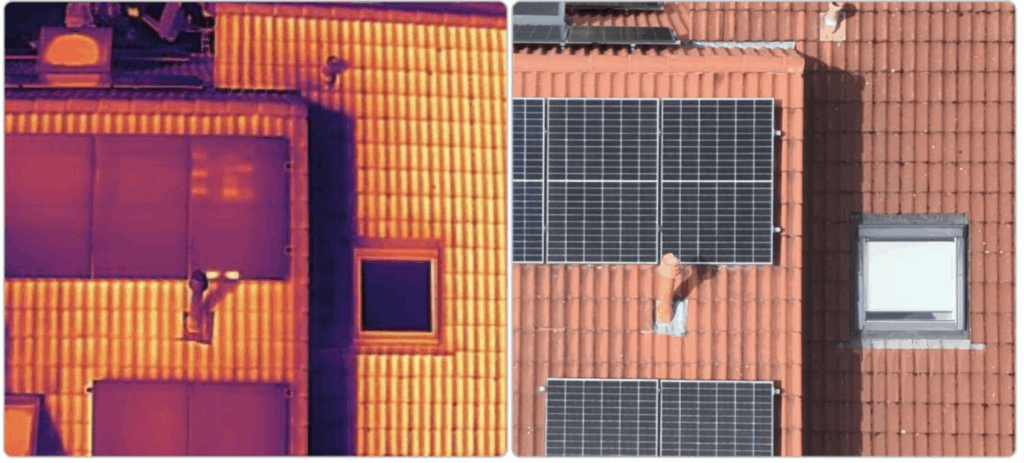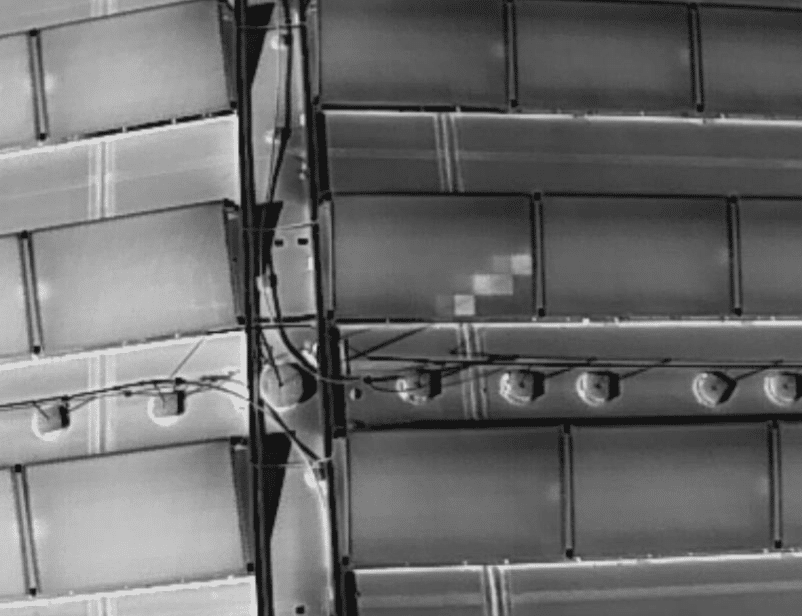Shading: small shadows, big effect
Shading is one of the most common causes of reduced yield in photovoltaic systems – and yet it is often underestimated. What appears to be a minor problem can actually have a major impact on the performance of entire module strings. With the help of drone thermography, such critical shading-related faults can be recognised, assessed and rectified at an early stage.

How does shading occur?
Shadows on a PV module – whether caused by trees, chimneys, lightning protection systems or temporary objects – lead to different levels of irradiation within a module array. As the position of the sun changes throughout the year, the shading situation also differs from season to season. An object that does not produce critical shading when the sun is high in summer can shade the entire module when the sun is low in winter. The affected cells supply less or no current, which can lead to a loss of power in the rest of the string.

Advantages of drone thermography for shading analysis:
Fast and comprehensive detection of shading areas, even on large roofs and ground-mounted systems
Combination with visual images for precise cause identification (e.g. tree, antenna, dirt)
Repeatability at different times of day or seasons – important for seasonal shading
Possible measures following fault detection:
Structural optimisations: Pruning of plants, redesign of new buildings
Technical measures: Use of shade-optimised PV modules, module optimisers, new connection concepts
Cleaning & maintenance: Removal of temporary sources of shade
Long-term strategy: Integrate shade analyses into the maintenance routine
Conclusion
Shading is not a cosmetic defect – it can lead to a serious loss of yield. Drone thermography makes visible what remains hidden to the human eye: the thermal effects on the shaded PV module. Early detection of critical shading and subsequent rectification can prevent loss of output and therefore save money.
📢 More interesting Insights?
🔗 Subscribe to the Photovoltaik Vision WhatsApp channel & newsletter!
Author and expert: Jan Wannenwetsch